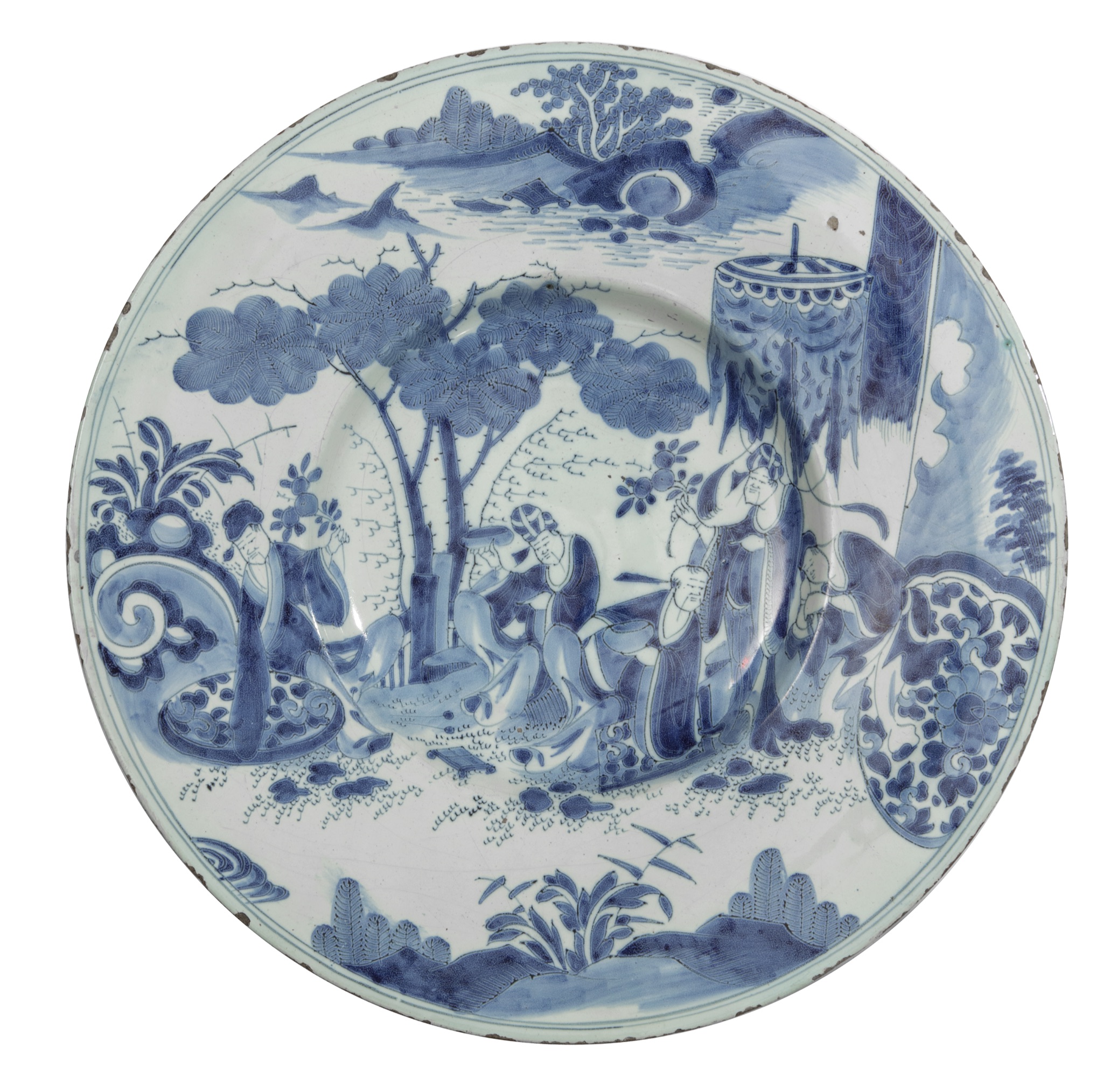![]()
Images on this website are licensed under a
Creative Commons Attribution-NoDerivs 3.0 Unported License.
OBJECT
D2406. Blue and White Chinoiserie Charger
Delft, circa 1690
Marked GK for Gerrit Pietersz. Kam, owner of the Drie Posteleyne Astonne (The Three Porcelain Ash- Barrels) factory from 1679 to 1700
The center decorated with five Chinese figures in a garden, one wielding a parasol, others holding branches or a bowl, painted to the edges of the rim with intricate overgrown rock landscapes.
DIMENSIONS
Diameter: 35.5 cm. (15.2 in.)
NOTE
The Dutch are well known for their commercial spirit, which has brought Dutch merchants all over the world, leaving physical, cultural, and even linguistic traces. While the Dutch trade with Asia is most commonly known, the merchants also explored and traded with the Baltic region. In fact, the Baltic trade provided sufficient financial resources for the Dutch to explore areas of Asia. The Dutch statesman Johan de Witt (1625–1672) described the Baltic seaborne trade as ‘the mother of all trade’. The Baltic seaborne trade was based on the exchange of raw materials, foodstuffs and minerals sourced from the East. The West provided rich commodities and domestically crafted industrial goods. This sophisticated trading system was based upon the pivotal role that staple markets played in the purchase and distribution of the commodities that were transported along the vast waterway stretching from the Finnish Gulf to the Danish Kattegat.
In the seventeenth century and beyond, the Dutch Republic boasted the highest living standards among its neighboring countries. The allure of Dutch craftsmanship, technology, industry, and the goods it produced sparked significant foreign interest. This interest even reached into the royal circles of Tsar Peter the Great (1672-1725). In 1697, he visited both Zaandam and Amsterdam, where he gained insights into various shipbuilding techniques, and also discovered the beauty of Delft faience and Dutch tiles. Christoffel Brants (1664-1732), a prominent Amsterdam merchant, was a special envoy of Tsar Peter. In this role, he made significant contributions to the dissemination of Dutch tiles and, potentially, Delft faience in Russia. Besides Russia, Delft pottery has left a lasting impression across the Baltic region with notable collections in Sweden, Germany, Estonia, Latvia, Lithuania, and Poland. One city that stands out prominently in this context is Gdansk (Danzig), Poland. Delftware is a frequent find in archaeological excavations there, emphasizing the strong connections with the Dutch Republic. Approximately half of the revenue for Dutch Baltic Sea traders in the seventeenth century was generated with trade from Gdansk. The harbor functioned as a transfer station for further distribution inland. Additionally, the city became home to a significant Dutch expatriate community, including individuals leaving for religious reasons and those seeking economic opportunities. Interestingly, a substantial amount of Delftware attributed to the ‘Drie Posteleyne Astonne’ (Three Porcelain Ash Barrels) made during the ownership of Gerrit Kam (1679- 1700) has been revealed during archeological finds in Gdansk. The Asian decoration depicted on this charger is a stand out example of the production from this factory. This popular scene was copied by local pottery makers.









